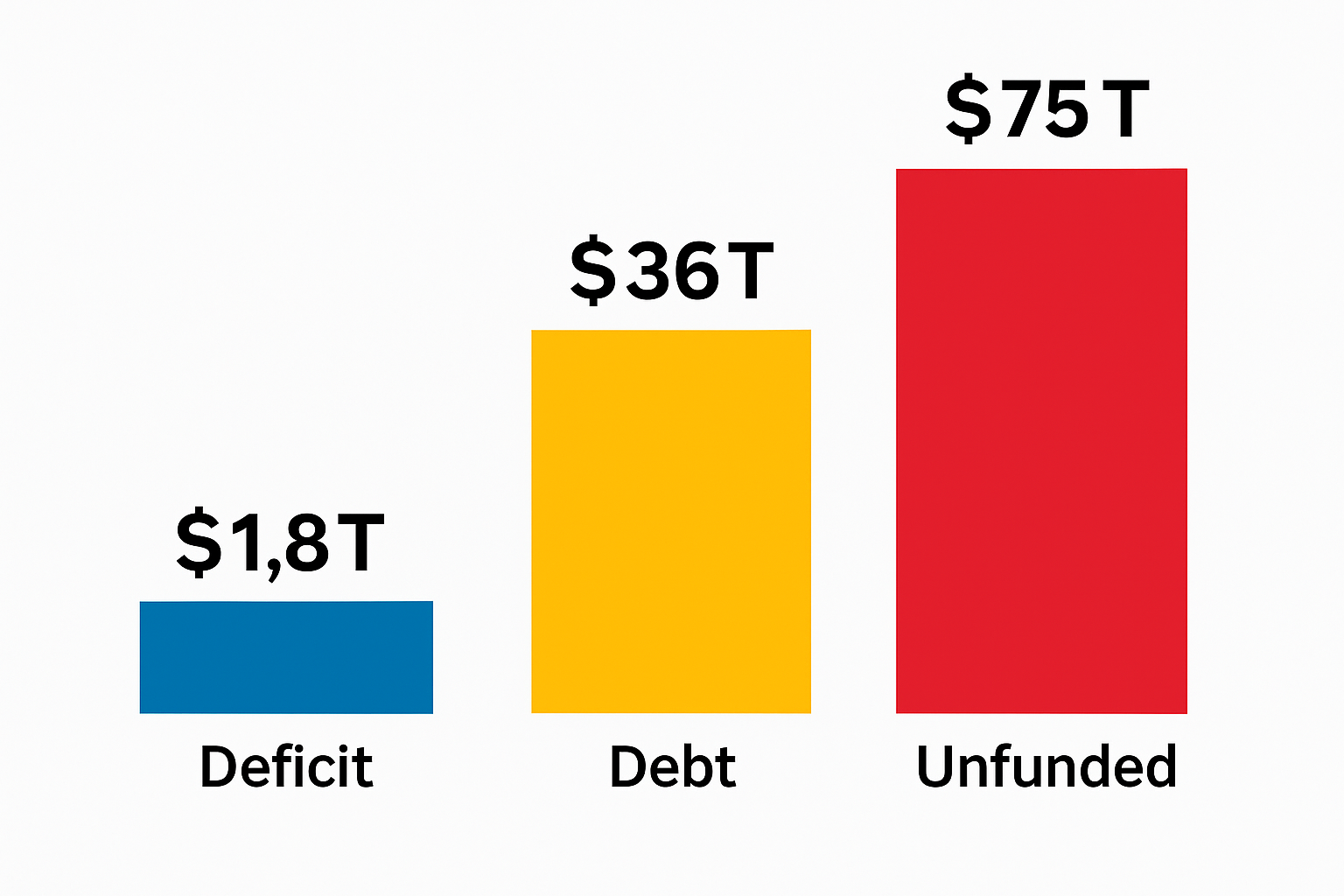The US debt crisis runs far deeper than the headline $36 trillion figure. Most of America’s true burden comes from unfunded liabilities like Medicare, Medicaid, and Social Security, which together exceed $75 trillion. This is a structural problem no political adjustment can solve.
The silent weight of Medicare and Social Security
When people think of the national debt, they imagine Treasury bonds and annual deficits. But the real weight comes from promises already made to citizens — benefits for healthcare and retirement that must be honored. According to the latest data from the US Treasury and GAO, over 70% of America’s total obligations come from these mandatory programs. Unlike discretionary spending, these costs are locked in by law and demographic reality. They cannot be ignored or simply reduced without devastating millions of people.
Why no government can fix it with policies alone
Many voters hope a new administration might balance the budget or slash waste. Yet these commitments are embedded in the system. With an aging population, fewer workers must support more retirees, guaranteeing rising outlays for Social Security and Medicare. Even the Congressional Budget Office warns that without profound reforms, debt servicing and entitlement spending will eventually overwhelm the entire budget. In simple terms, the math is broken.
The case for exploring alternatives
This is why more investors, technologists, and even cautious institutions are exploring Bitcoin and decentralized systems. Not as speculative gambles, but as hedges against a structurally unsustainable fiat regime. When long-term obligations are more than double the reported national debt, confidence in the currency backing these promises naturally erodes. It is no longer a question of if, but when.







